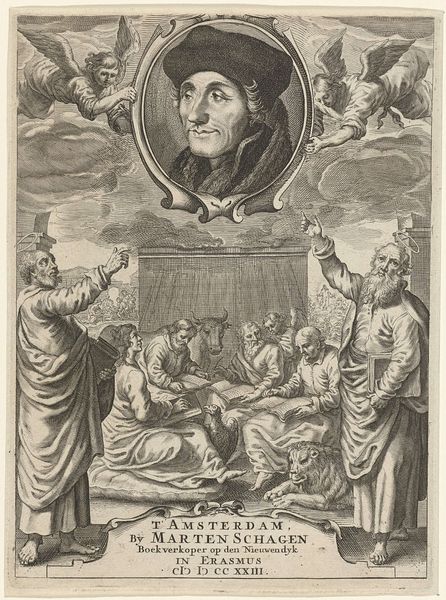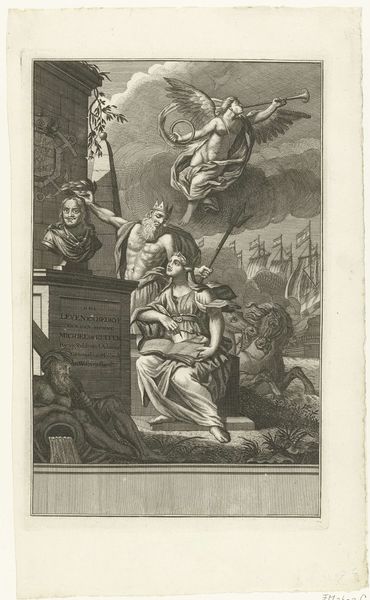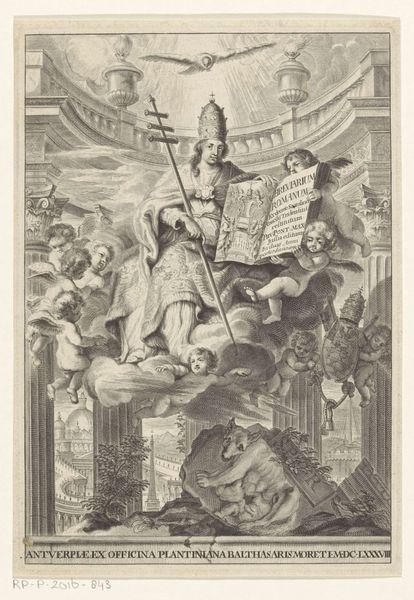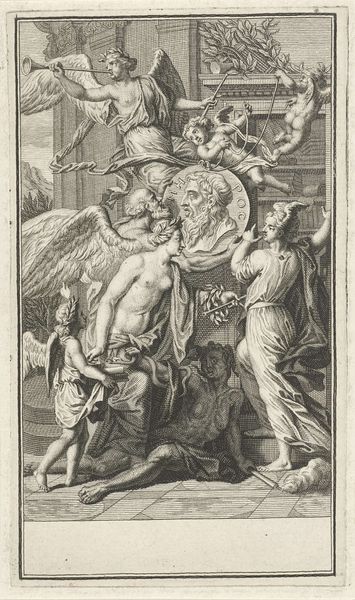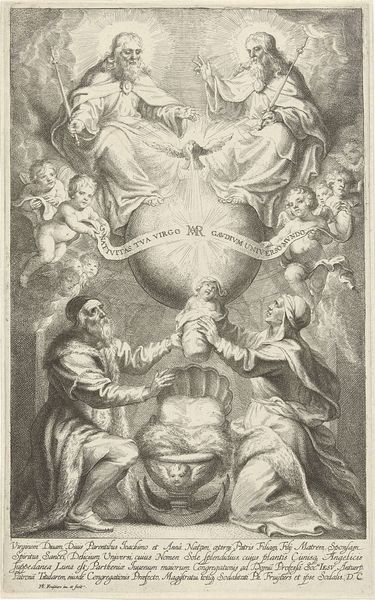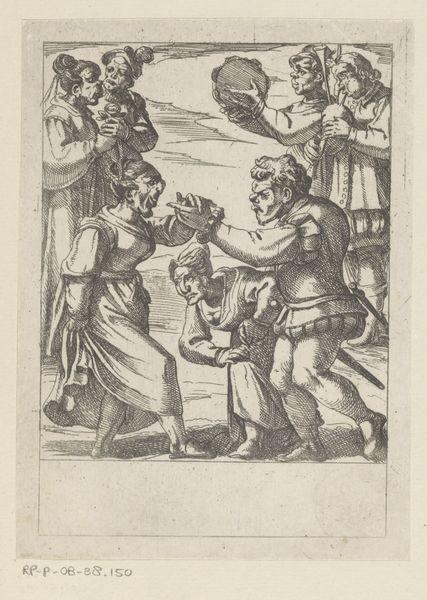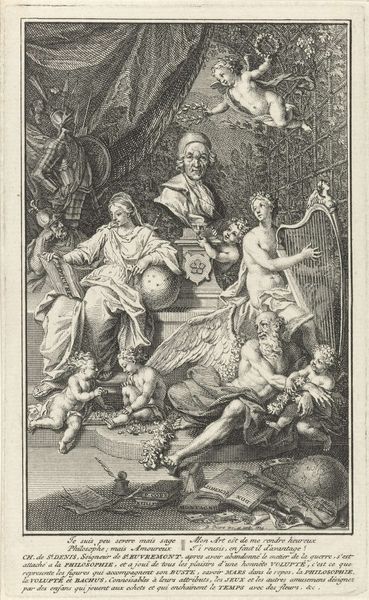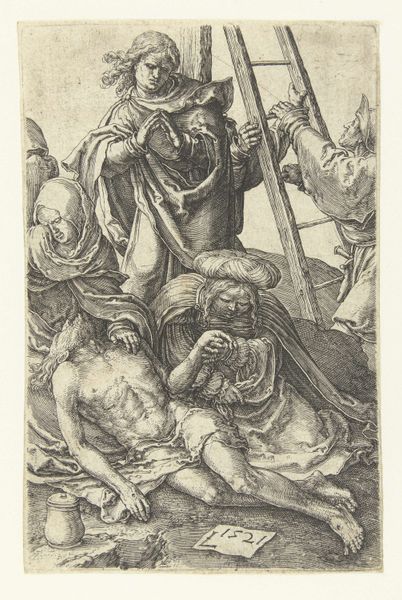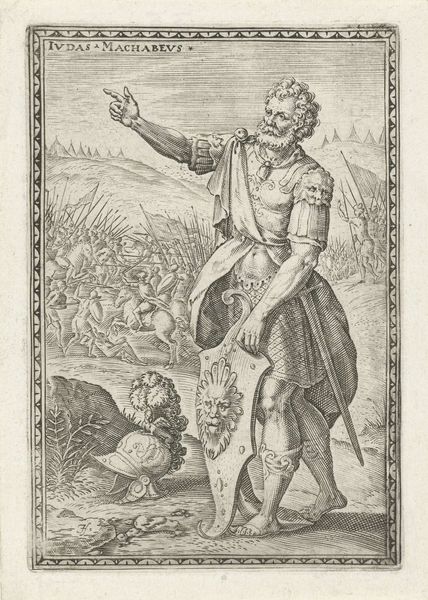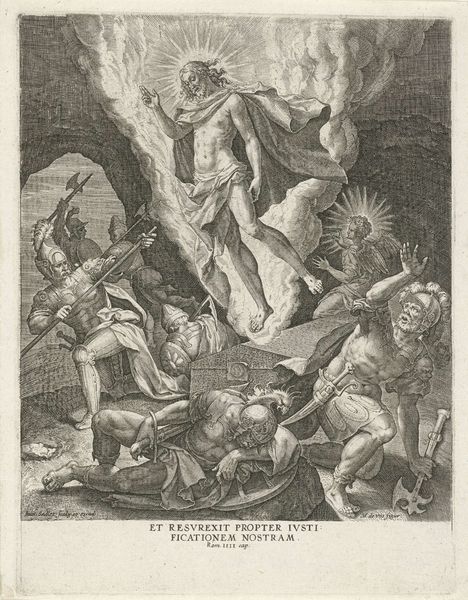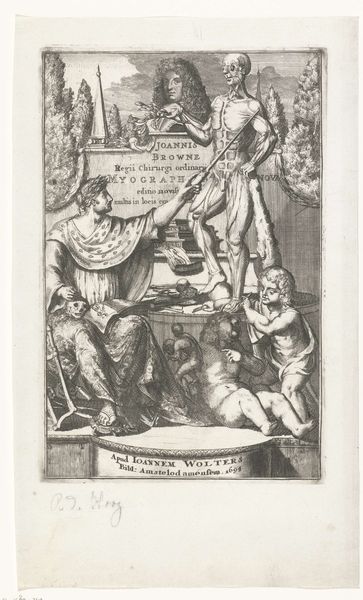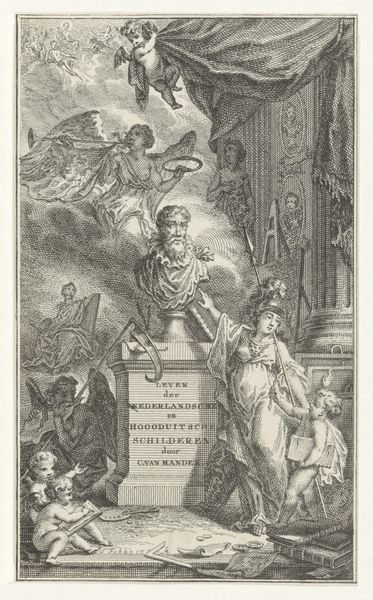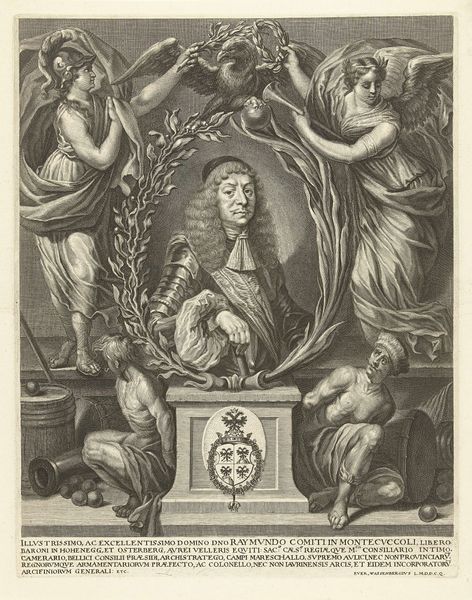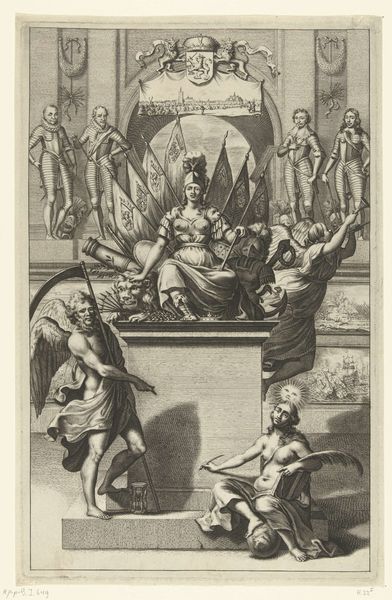
engraving
#
portrait
#
allegory
#
baroque
#
figuration
#
history-painting
#
engraving
Dimensions: height 163 mm, width 125 mm
Copyright: Rijks Museum: Open Domain
Curator: Editor: This engraving, "Allegorische voorstelling met portret van Philips Verheyen" by Pieter Devel, dating from around 1710, has a very celebratory, almost theatrical feel to it. There's a real sense of drama in the poses and the allegorical figures surrounding the portrait. How do you interpret this work, given its historical context? Curator: This piece encapsulates the Baroque period's penchant for allegorical representation, intertwined with the rise of scientific thought. Look at how Verheyen, a prominent anatomist, is lionized. The female figures could represent Anatomy revealing herself, or perhaps a mourning genius, alongside cherubs associated with intellectual prowess. The inscription itself, “Secretion Nature mysteria Temporis auxilio detegit Anatomia” which roughly translates to Anatomy reveals nature’s secrets with the help of time, can be considered an important perspective. This imagery reflects the evolving perception of science challenging established structures. What sociopolitical elements were at play that positioned anatomy so prominently? Editor: The figures of the cherubs contrast strangely with the weeping figure. It's interesting to consider why both images are shown. Curator: Indeed, in viewing anatomical dissection in the historical moment in which Verheyen would have lived, many viewers would have interpreted a violation of the human form through what was known at that time as cutting-edge anatomy. This element reveals anxieties present surrounding intellectual growth and potential violence committed towards certain populations as a result of those expansions of thought. We can view those anatomical explorations as actively linked to political interests or colonial expansion during the era. Can you see evidence of this in the engraving? Editor: Now that you mention it, this complexity makes a lot of sense! It's not simply a celebration of knowledge, but maybe also an acknowledgement of power and even potentially exploitation involved. Curator: Precisely! And through this artwork, we see those multifaceted perspectives present in 18th century thinking, revealed through the intersection of scientific representation and baroque style.
Comments
No comments
Be the first to comment and join the conversation on the ultimate creative platform.
